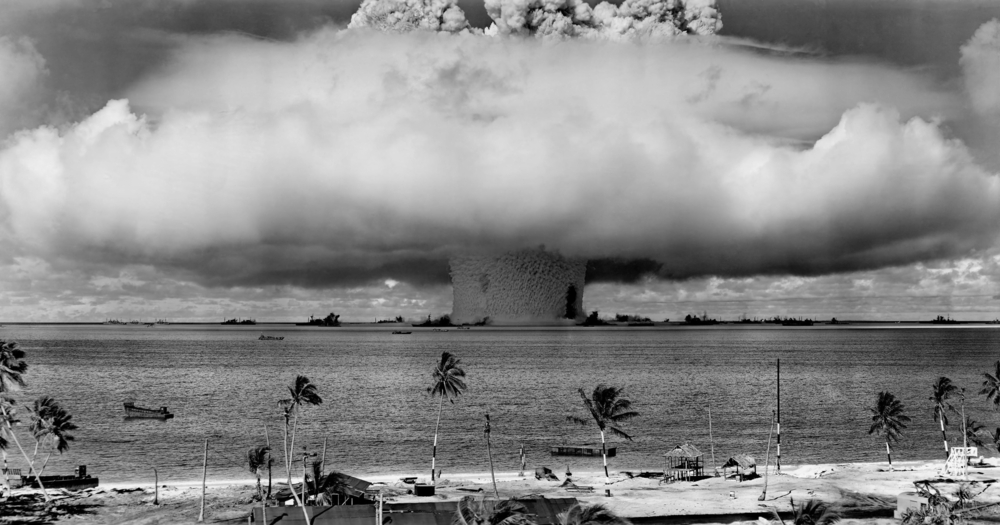When humans were busy pummeling the Earth with atomic bombs in the latter half of the 20th century, turtles and tortoises across the world were quietly (and very slowly) getting on with their lives. Unbeknownst to them, the legacy of the dreadful explosions was becoming deeply imprinted into their shells.
New research has studied the shells of turtles and tortoises found near atomic bomb testing sites and nuclear waste dumping grounds. Within the layers of their shells’ keratin, the scientists discovered clear signatures of anthropogenic uranium from nuclear fallout.
The shells of these animals grow in layers, acting as a “reservoir of environmental information,” much like tree rings. As the researchers explain in their new paper, this fact could be used as a tool to reconstruct the history of nuclear bomb blasts.
Scientists at the University of New Mexico and the Los Alamos National Laboratory – the birthplace of the first atomic bombs – collected five shells from a variety of hotspots linked to the use of nuclear bombs.
Unusual uranium signatures were found in the shells of a green sea turtle from the Republic of the Marshall Islands, a desert tortoise from southwestern Utah, a river cooter from the Savannah River Site in South Carolina, and a box turtle from the Oak Ridge Reservation in eastern Tennessee.
Some of the shells’ uranium signatures closely lined up with the nuclear events. The shell from the Oak Ridge Reservation contained a uranium signature in its growth rings between 1955 and 1962, peaking in 1958, which directly links to the airborne release of highly enriched uranium in the area.
The shell from the Marshall Islands is especially interesting. This remote group of idyllic islands served as the Pacific Proving Grounds for the US between 1946 to 1958 and witnessed some 67 nuclear tests, leaving behind an unpleasant legacy.

Part of Operation Crossroads, the Baker test involved detonating a nuclear bomb underwater on July 25, 1946 in the Marshall Islands.
Image credit: Everett Collection/Shutterstock.com
The green sea turtle shell used in this latest study was collected from the belly of a tiger shark caught near Enewetak Atoll in 1978, around 20 years after the end of nuclear testing at the site. The turtle was relatively young and unlikely to have been alive at the time of the blast, yet its shell still featured the uranium signatures.
The researchers suspect that the evidence of radionuclides in its shell shows how cleanup activities of the Atoll kicked up old contaminated sediments. Alternatively, it could indicate that legacy contamination from the bomb was still present in the atoll lagoon and ended up in the turtle shell through its diet of irritated seagrass and algae.
Shell-capped reptiles aren’t the only living things that can be used to track the history of atomic bombs. Coral skeletons and mollusk shells have been used in the past. The eyes of the longest-living vertebrate, the Greenland shark, are also surprisingly effective.
However, the researchers argue that turtles and tortoises (aka chelonians) are particularly useful tools for piecing together the history of nuclear activity on Earth. As such, they’re hoping they can be used for further research into how atomic bombs have changed our planet.
“These animals are thus uniquely positioned to record information about human activities in nuclear landscapes over the long-term. We anticipate that combining analyses of historically collected and modern specimens will significantly expand our environmental monitoring abilities as they relate to ongoing nuclear contamination questions,” the study authors write in their conclusion.
The study is published in the journal PNAS Nexus.
Source Link: Turtles Are Unexpected Time Capsules Of Earth's Nuclear Bomb History